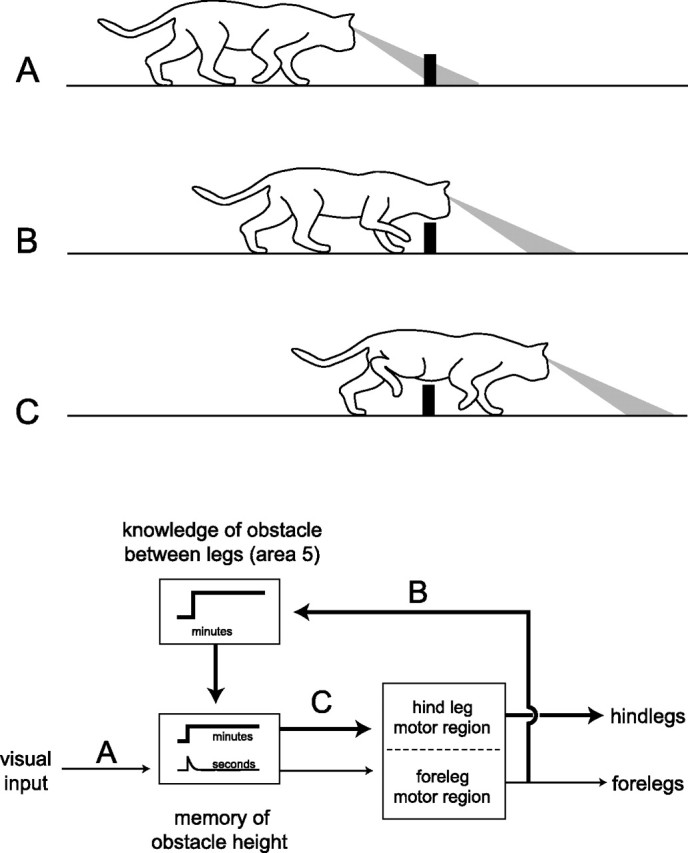Figure 8.

Conceptual model for the role of area 5 in the long-lasting working memories of straddled obstacles. Events in panels A–C (top) correspond to the activation of pathways labeled A–C in the block diagram (bottom). Thin traces represent pathways guiding foreleg movement, and thick traces represent pathways guiding hindleg movements involving long-lasting working memory. A, Visual information about the height of an obstacle is stored in memory for a short period of time in an area outside area 5, indicated by the inset labeled “seconds” in the bottom box. B, An efference copy signal related to motor commands producing stepping in the forelegs initiates activity in neurons in area 5 that is maintained for the duration that animal straddles the obstacle, indicated by the inset labeled “minutes” in the top box. Prolonged activity in area 5 then leads to the maintenance of the memory of obstacle height, indicated by the inset labeled “minutes” in the bottom box. C, Motor commands for producing swing movements of the hindlegs are regulated by the memory of obstacle height to lift the hindleg over the obstacle.
